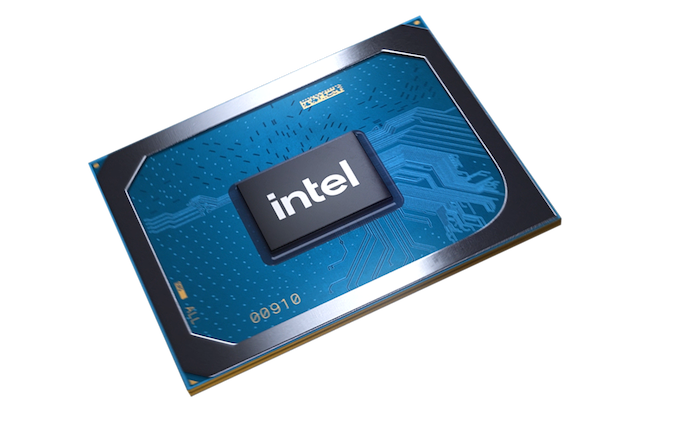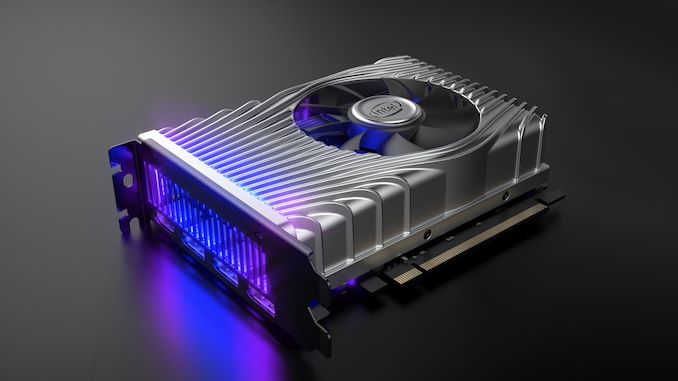Intel’s DG1 GPU Coming to Discrete Desktop Cards Next Year; OEM-Only
by Ryan Smith on October 31, 2020 12:01 PM EST
Alongside today’s launch of Intel’s DG1-based Iris Xe MAX graphics for laptops, the company is also quietly confirming that DG1 will be coming to desktop video cards as well, albeit in a roundabout way.
Though still in the early stages, a hereto unnamed third party has reached an agreement with Intel to produce DG1-based desktop cards. These cards, in turn, will be going into OEM desktop systems, and they are expected to appear early next year.
The very brief statement from Intel doesn’t contain any other details. The company isn’t saying anything about the specifications of the OEM desktop cards (e.g. clockspeeds), nor are they naming the third party that will be making the cards, or any OEMs who might be using the cards. For today at least, this is a simple notification that there will be OEM cards next year.
As for the market for such cards, there are a couple of avenues. OEMs could decide to treat the cards similarly to how Iris Xe MAX is being positioned in laptops, which is to say as a cheap add-in accelerator for certain GPU-powered tasks. Intel has baked a significant amount of video encode performance into the Xe-LP architecture, so the cards could be positioned as video encode accelerators. This would be very similar to Intel’s own plans, as the company will be selling a DG1-based video encode card for servers called the SG1.
Alternatively, the third party may just be looking to sell the DG1 card to OEMs as simple entry-level discrete graphics cards. Based on what we know about Xe MAX for laptops, DG1 is not expected to be significantly more powerful than Tiger Lake integrated graphics. However, as pointed out by our own Dr. Ian Cutress, it should be a good bit better than any comtemporary Atom’s integrated GPU.

Sadly, the OEM card probably won't be as fancy as Intel's DG1 development card










68 Comments
View All Comments
5080 - Saturday, October 31, 2020 - link
Interesting, but will OEM's really pick this up? AMD and Nvidia's latest cards will most likely beat the Xe by a large margin and they both come with much more mature drivers. The only real positive coming from this is that there will be another player challenging the duopoly, maybe not in the near future, but years down the road.jeremyshaw - Saturday, October 31, 2020 - link
Or, like Intel for the past 5 years, this is just another SKU that strings people along.limitedaccess - Saturday, October 31, 2020 - link
It'll have it's usage criteria at possibly well under <75w and at this moment leading encoder/decoder performance in that class which is likely more appealing for this segment than 3D gaming capabilities.Smell This - Monday, November 9, 2020 - link
The $99 Ryzen 3 3200G sets the bar rather high in this class ... CPU/GPU 'torture' less than 100w / typical usage 35w +/- maxed at 65w ____ do not see this ending well for the discreet DG1 card_______________________________________________________________
**it should be a good bit better than any comtemporary Atom’s integrated GPU**
*contemporary*
DanNeely - Saturday, October 31, 2020 - link
NVidia's been selling near-worthless barely faster than an IGP 20-30W graphics cards to OEMs for years. If the company making the intel desktop cards can get the price right, there's no reason they shouldn't be able to sell them. The real question's if they'll also become available in the retail market. Use there's a lot more limited; but minspec card have always been useful for adding additional video outputs for display wall type systems, or to put newer hardware decode into an existing HTPC.willis936 - Sunday, November 1, 2020 - link
Can you show a single benchmark to support this fantasy?Spunjji - Monday, November 2, 2020 - link
A benchmark showing that Nvidia sell near-worthless low-end GPUs to OEMs? How would that work?Of course if you want to bet that a GT 710 could compete with Iris Xe or Vega 8, go ahead, throw your money away 😅
TheinsanegamerN - Tuesday, November 3, 2020 - link
The GT710 has long been supplanted by the likes of MX 250/350/450 cards. I cant think of a single OEM desktop PC that still uses GT 710s, if they have an entry level card they have the GT 1030.Spunjji - Wednesday, November 4, 2020 - link
The MX series are all notebook chips - this is about desktop cards. OEMs still bung these POS cards into bottom-tier builds just to fill out a specification.Example:
https://www.laptopsdirect.co.uk/zoostorm-core-i5-9...
smilingcrow - Monday, November 2, 2020 - link
Considering how popular Ryzen CPUs are without a dGPU, there is a market for entry level GPUs for those that don’t play games.So it would be ironic if Intel were to sell into that market which AMD created.